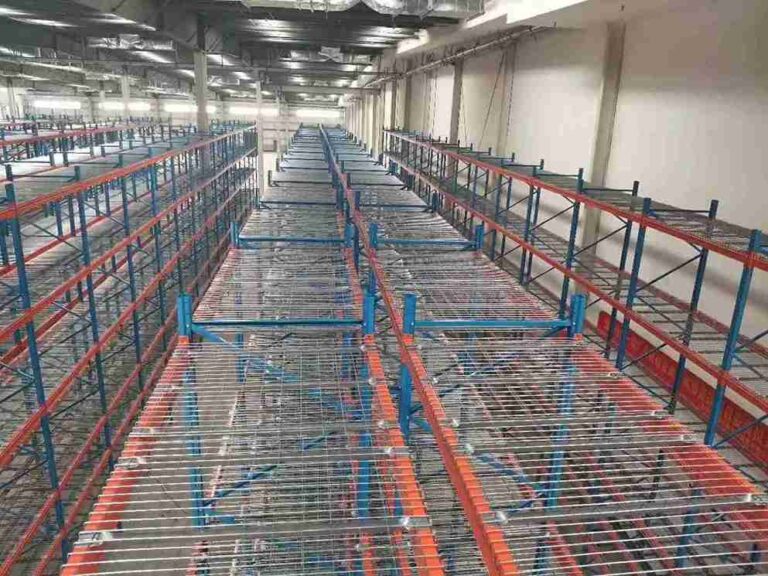📐 "First 50 Enterprise Queries Get Custom 3D Warehouse Design" Plan

Maximize Storage & Cut Costs: The Ultimate Guide to Z-Beam Racking Efficiency
In the high-stakes arena of global logistics, where every square meter and every operational dollar counts, the choice of storage infrastructure is not merely a procurement decision—it is a strategic one. For distribution centers, manufacturing plants, and logistics hubs across Southeast Asia, the Middle East, Africa, and Latin America, the relentless pursuit of efficiency is paramount. The cornerstone of this efficiency lies in a component often overlooked: the pallet racking beam.
While conventional C-beam racking has been a common sight, a superior engineering solution, Z-beam racking, has consistently proven to be the definitive choice for operations that refuse to compromise on strength, safety, and long-term value. This definitive guide delves beyond the surface, offering a masterclass in how the fundamental design principles of Z-beam racking create a cascade of operational advantages, directly enabling businesses to maximize their storage density and drastically cut costs.
The adoption of Z-beam racking represents a shift from commodity purchasing to engineered solutions. It is the backbone upon which sustainable, future-proof logistics operations are built, forming the critical infrastructure for everything from high-density manual storage to fully automated retrieval systems.

Deconstructing the Weak Link: The Inherent Flaws of Conventional Racking
To fully grasp the superiority of Z-beam racking, one must first understand the critical limitations of its widely used predecessor, the C-beam. The C-beam, named for its C-shaped cross-section, possesses a fundamental engineering vulnerability that compromises performance and safety.
The Torsional Weakness of C-Beam Design
The primary flaw in C-beam racking is its poor resistance to torsional forces, or twisting. The open side of the “C” profile creates a structural weakness that allows the beam to twist under unevenly distributed loads or lateral impacts from material handling equipment. This torsional flex is not a minor issue; it is a critical failure point that can lead to beam dislodgement, load instability, and in worst-case scenarios, catastrophic racking collapse. This inherent instability makes standard C-beam racking a questionable choice for high-performance environments.
The Illusion of Savings: The True Cost of C-Beam Racking
The initial lower price point of C-beam racking is a deceptive metric. A comprehensive Total Cost of Ownership (TCO) analysis often reveals a far more expensive long-term investment. The hidden costs associated with C-beam racking are substantial:
Frequent Maintenance and Repair: The susceptibility to twisting and damage necessitates more frequent inspections and part replacements.
Operational Downtime: A single damaged beam can halt operations for an entire aisle, resulting in significant productivity losses.
Safety and Liability Risks: A compromised racking system increases the risk of workplace accidents and product damage, leading to potential insurance premium hikes and liability claims.
Obsolescence in Automation: The flex and inconsistency of C-beam racking make it unsuitable for the precision demands of Automated Storage and Retrieval Systems (ASRS), necessitating a complete system replacement during automation upgrades.
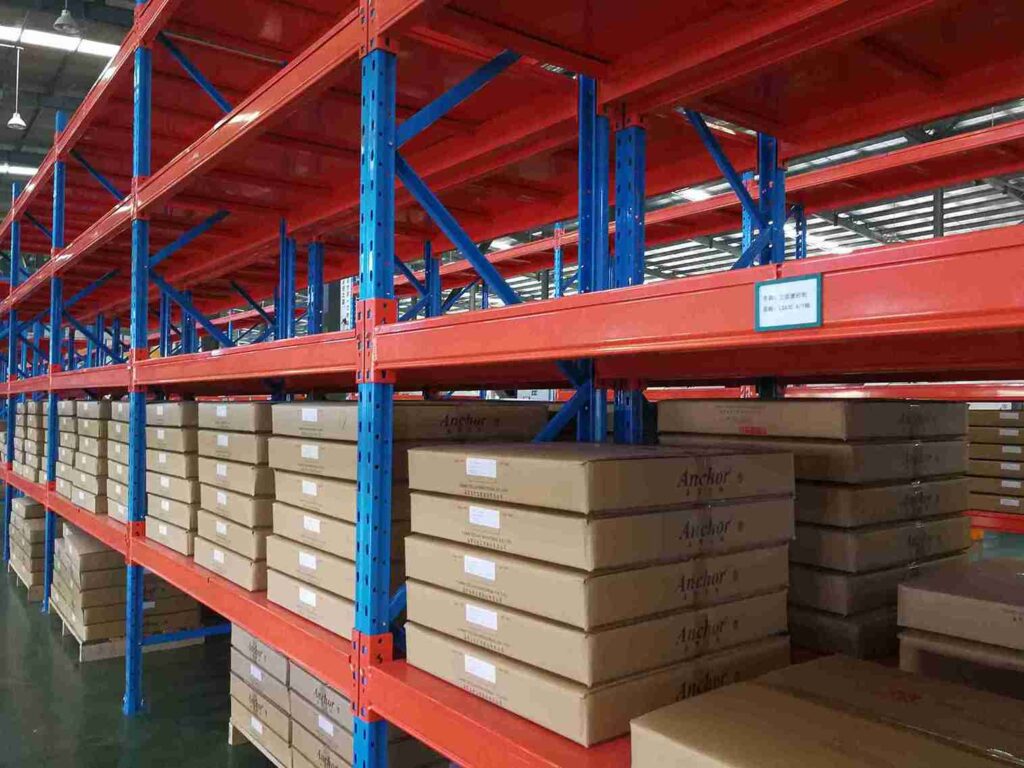
The Z-Beam Racking Paradigm: An Engineering Masterclass
Z-beam racking is not a minor improvement; it is a fundamental re-engineering of the storage beam based on immutable principles of structural mechanics. Its name is derived from its Z-shaped cross-section, a design that strategically maximizes strength and stability.
The Physics of Superiority: Moment of Inertia in Action
The unparalleled performance of Z-beam racking is rooted in a key engineering principle: the moment of inertia. This is a geometric property that measures a beam’s resistance to bending. The Z-beam racking profile is meticulously designed to distribute its steel mass as far as possible from its neutral axis, resulting in a dramatically higher moment of inertia compared to a C-beam of similar weight. This translates directly into a beam that is exceptionally stiff, resisting deflection and, most importantly, eliminating the torsional twist that plagues C-beam designs. This inherent rigidity is the foundational advantage of Z-beam racking.
Quantifiable Performance Advantages of Z-Beam Racking
The theoretical strength of Z-beam racking materializes in tangible, operational benefits that directly impact the bottom line:
Unmatched Load Capacity: A Z-beam racking system can support significantly greater weights than a comparable C-beam, enabling safer storage of heavier pallets and facilitating taller, more dense storage configurations.
Absolute Torsional Rigidity: The closed, Z-shaped profile provides 360-degree structural integrity, ensuring the beam remains stable and true, even under the dynamic forces of narrow-aisle forklifts and AGVs.
Optimized Material Efficiency: The structural efficiency of Z-beam racking means less steel is required to achieve a given load rating, leading to material savings and reduced freight costs.
Extended Service Life: The robust construction of Z-beam racking is highly resistant to the fatigue and deformation that occurs over time, ensuring a longer, more reliable operational lifespan and a lower TCO.
Maximizing Storage Density: The Strategic Role of Z-Beam Racking
Increasing storage capacity within a fixed footprint is a universal goal. The inherent strength of Z-beam racking is the critical enabler for the high-density storage solutions that make this possible.
Enabling Narrow Aisle and VNA Racking Systems
Narrow Aisle (NA) and Very Narrow Aisle (VNA) racking systems are proven methodologies for dramatically increasing storage density. These systems, however, place immense demands on the racking structure. The torsional rigidity of Z-beam racking is non-negotiable in these applications. It prevents the beam deflection that could lead to contact between the racking and the material handling equipment. This stability is the bedrock of safe VNA operations, which can increase storage capacity by over 60%. For facilities utilizing man-up order pickers or guided AGV forklifts, the predictable, rigid performance of Z-beam racking is a fundamental safety and operational requirement.
The Foundation for High-Bay Warehouse Storage
When warehouses expand vertically into high-bay configurations, the structural integrity of every component is magnified. The cumulative loads and the potential for harmonic motion make the choice of beam critical. The high strength-to-weight ratio and resistance to bending offered by Z-beam racking ensure that these towering storage structures are not only capacious but also inherently safe and stable. This makes Z-beam racking the preferred choice for high-bay warehouses that may later integrate ASRS technology.
The Indispensable Backbone for ASRS and Automation
In an automated warehouse, the racking is not passive storage; it is an active, integral component of the machine system. Automated Storage and Retrieval Systems (ASRS) and stacker cranes operate with millimeter precision. Any deviation or flex in the racking can lead to misalignment, system faults, and catastrophic collisions. The predictable, rigid performance of Z-beam racking provides the stable and precise “rail and support system” that these high-speed automated systems require. Specifying Z-beam racking for an ASRS project is a standard industry best practice, safeguarding the entire automation investment.
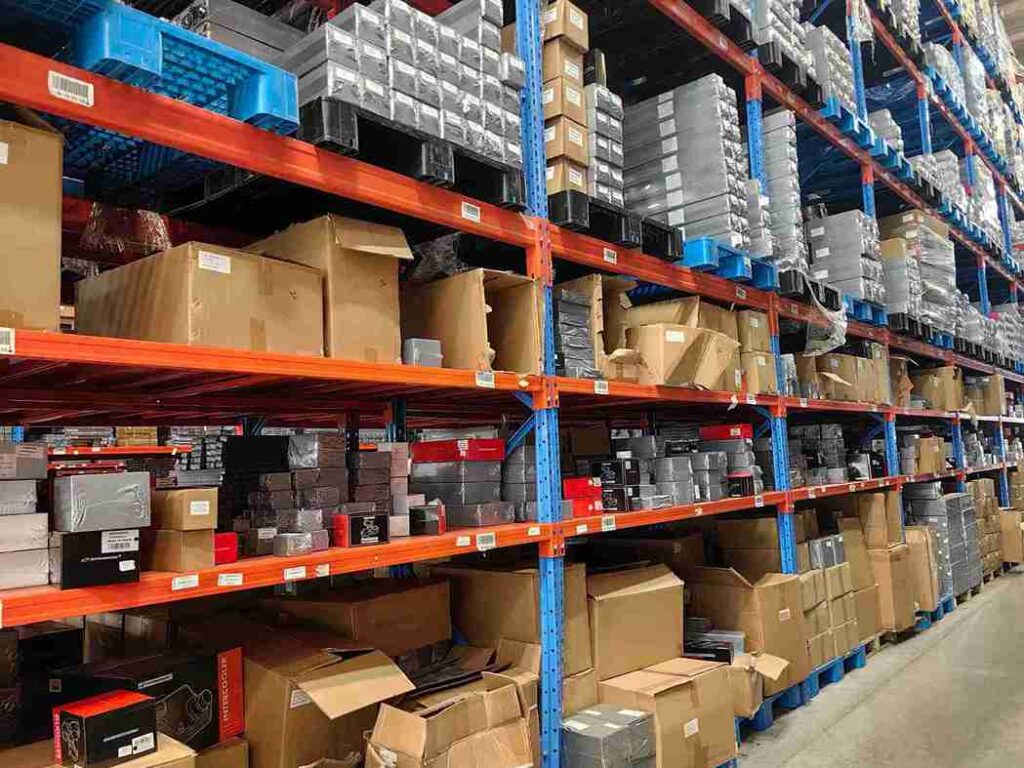
The Financial Logic: How Z-Beam Racking Systematically Cuts Costs
The financial argument for Z-beam racking is compelling and multifaceted, extending far beyond the initial purchase price to deliver substantial savings throughout the asset’s life.
Analyzing the Superior Total Cost of Ownership (TCO)
A true evaluation of Z-beam racking must consider its Total Cost of Ownership, which is consistently lower than that of C-beam alternatives:
Durability and Longevity: The superior construction of Z-beam racking ensures a operational lifespan that often exceeds decades, drastically reducing the annualized cost of the asset.
Minimized Maintenance Expenditure: The impact-resistant and twist-resistant nature of Z-beam racking leads to far fewer incidents of damage, directly reducing repair and replacement parts costs.
Potential for Insurance Incentives: Many insurance providers recognize the enhanced safety of robust storage systems, and facilities utilizing Z-beam racking may qualify for reduced insurance premiums.
Mitigating Downtime and Protecting Inventory
Operational downtime is a primary profit-killer in logistics. The resilience of Z-beam racking to daily operational stresses translates directly into fewer unplanned stoppages. Furthermore, the stability of Z-beam racking significantly reduces the risk of load failure and inventory damage, protecting valuable goods and preventing financial loss.
Future-Proofing the Warehouse Investment
The logistics industry is in a constant state of evolution. A storage system that is adequate today may be obsolete tomorrow. Z-beam racking provides a scalable, adaptable foundation for future growth. Its strength and precision allow for easy reconfiguration, capacity upgrades, and seamless integration with automation technologies. Investing in a Z-beam racking system today prevents a costly and disruptive system replacement in the near future, solidifying its status as a financially astute long-term investment.
Global Applications: Z-Beam Racking Proving Grounds
The performance of Z-beam racking is not theoretical; it is demonstrated daily in some of the world’s most demanding logistics environments.
In the humid, high-throughput distribution centers of Southeast Asia, Z-beam racking provides the robust framework for e-commerce fulfillment, resisting the structural stresses of rapid inventory turnover.
Across the Middle East, in the vast, temperature-extreme logistics parks of the UAE and Saudi Arabia, Z-beam racking forms the core of high-bay, automated facilities that serve as regional hubs.
Throughout the manufacturing and agricultural sectors of Latin America, Z-beam racking supports heavy loads in narrow aisle configurations, maximizing space in high-value industrial real estate.
In the growing industrial sectors of Africa, Z-beam racking offers a durable, low-maintenance solution for new warehouse constructions, designed to handle challenging conditions and heavy unit loads.
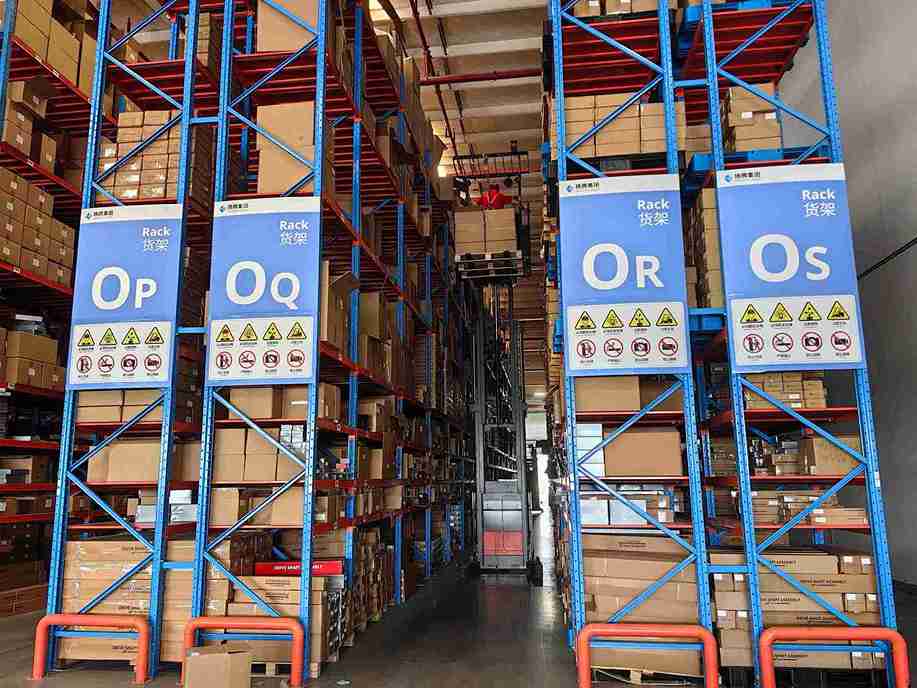
Selecting the Optimal Z-Beam Racking System
Choosing the right Z-beam racking requires a meticulous approach, moving beyond catalog specifications to a deep understanding of operational needs.
Critical Technical Specifications for Z-Beam Racking
When evaluating a Z-beam racking system, several technical aspects are paramount:
Beam Profile and Steel Gauge: The depth of the beam and the thickness of the steel are primary determinants of its capacity. A deeper, thicker Z-beam racking profile will invariably offer higher load capacities.
Dynamic and Static Load Ratings: It is crucial to understand both the uniformly distributed load (UDL) and the point load capacity of the Z-beam racking to ensure it matches your specific pallet and inventory profile.
Connection Methodology: The connection between the Z-beam racking and the upright frame is a critical point of strength. Bolt-together connections offer the highest level of integrity and are essential for seismic zones and high-bay applications, while teardrop offers faster assembly for standard applications.
Corrosion Protection: The finish on Z-beam racking must be suited to the operational environment. High-quality epoxy powder coating is standard, but for highly corrosive environments (coastal areas, cold storage), hot-dip galvanization of the Z-beam racking is highly recommended.
The Non-Negotiable Need for Professional Design and Analysis
Selecting and designing a Z-beam racking system should never be a guessing game. Engaging with a specialist who provides a professional storage consultation is essential. This process involves a thorough analysis of load requirements, pallet types, forklift dynamics, and future growth plans to engineer a Z-beam racking layout that is not only safe and compliant with international standards (FEM, RMI) but also perfectly optimized for peak operational throughput and efficiency.
Installation and Lifetime Care for Z-Beam Racking Systems
The performance of even the highest-quality Z-beam racking can be undermined by poor installation or negligent maintenance. A disciplined approach to both is vital.
Precision Installation for Maximum Performance
Professional installation of Z-beam racking is a critical investment. Certified installers ensure that:
Upright frames are perfectly plumb and aligned.
All Z-beam racking components are securely connected using the specified method (bolts or locks).
The entire structure is level, square, and torqued to specification.
A perfectly installed Z-beam racking system performs as engineered, delivering its full potential in safety and load-bearing capability.
A Proactive Maintenance and Safety Regimen
To preserve the integrity of a Z-beam racking system, a formal inspection and maintenance protocol must be established:
Operator-Level Visual Checks: Forklift operators should be trained to report any visible damage to the Z-beam racking immediately.
Scheduled Formal Inspections: A designated safety officer should perform a detailed quarterly inspection of the Z-beam racking system, looking for signs of impact, deflection, or corrosion.
Annual Professional Audits: An annual audit conducted by a racking safety expert, such as the provider of the Z-beam racking, can identify subtle issues like minor twists or connection loosening that may be missed in routine checks.
The implementation of physical protection, such as column guards and end-of-aisle protectors, is a simple and highly effective strategy to safeguard the Z-beam racking investment from accidental impacts.
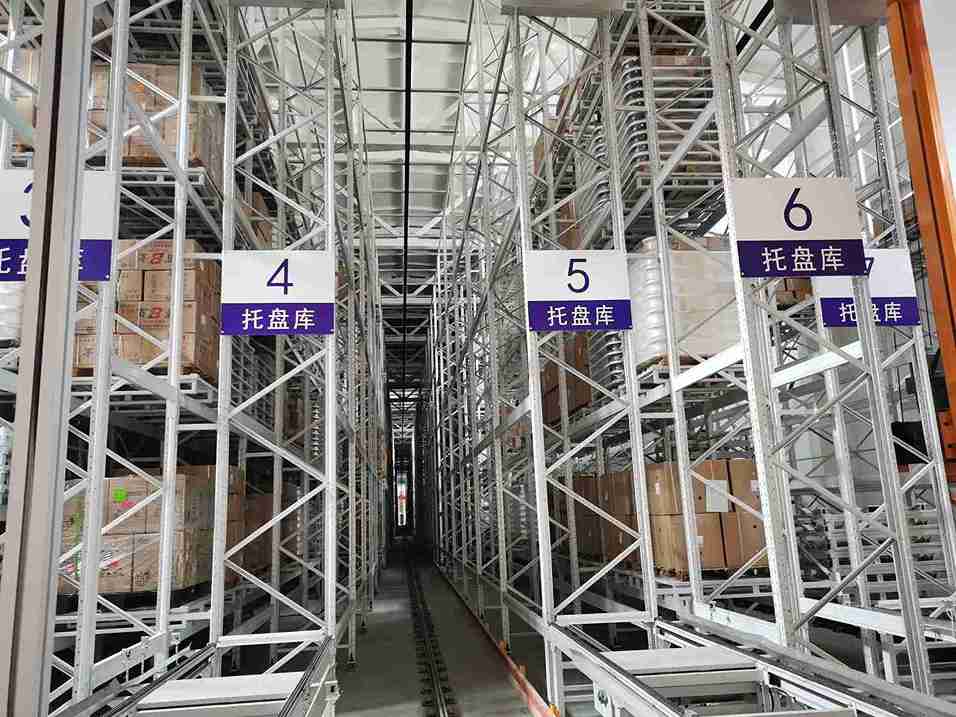
Conclusion
In the complex calculus of modern warehouse management, where efficiency and cost-control are paramount, the selection of storage racking is a decision that resonates for the lifetime of the facility. Conventional C-beam racking, with its concealed costs and structural compromises, represents the outdated way. Z-beam racking stands as the unequivocal modern standard, delivering a powerful combination of engineered strength, operational safety, and demonstrable economic efficiency.
The strategic implementation of Z-beam racking is the most direct path to achieving superior storage density and realizing significant, long-term cost reductions. For any business serious about building a resilient, scalable, and high-performing logistics operation, the evidence is clear and the choice is definitive: the foundation for success is built with Z-beam racking.
Frequently Asked Questions (FAQs)
1. How does the weight of Z-beam racking compare to C-beam, and how does this impact shipping costs to regions like West Africa?
While the weight of a Z-beam racking component can be similar to a C-beam of equivalent capacity, its superior strength often means that a lighter Z-beam racking can be used to achieve the same load rating as a heavier C-beam. This can lead to net savings in material and shipping costs. A professional supplier will optimize the design to minimize total weight without compromising the performance of the Z-beam racking system.
2. Can Z-beam racking be easily reconfigured if our warehouse layout needs to change?
Yes, one of the key advantages of a quality Z-beam racking system is its reconfigurability. Provided the upright frames are compatible and undamaged, the Z-beam racking can be unbolted or unlocked and repositioned to new heights or locations. This flexibility is a core part of the long-term value proposition of investing in a Z-beam racking system.
3. Are there specific fire safety considerations for Z-beam racking in high-bay warehouses?
While the Z-beam racking itself is steel, the design of high-bay warehouses using Z-beam racking must integrate comprehensive fire protection systems. The dense storage configuration can challenge standard sprinkler systems. Engineers often recommend in-rack sprinklers that are integrated directly into the Z-beam racking structure to ensure water can penetrate to the seat of a fire.
4. What is the typical lead time for a large, custom Z-beam racking project destined for a market like Chile or Indonesia?
Lead times for a custom-engineered Z-beam racking project can vary based on scale and finish requirements but generally fall between 8 to 12 weeks from final design approval. This timeline encompasses detailed engineering, manufacturing, quality control, and preparation for sea freight. Early engagement with the Z-beam racking supplier during the project’s planning phase is crucial for timeline alignment.
5. How does the performance of Z-beam racking contribute to sustainability goals?
The longevity and durability of Z-beam racking directly contribute to sustainability by reducing the need for replacement and minimizing waste. The material efficiency of the Z-beam racking design means less steel is consumed per unit of storage capacity. Furthermore, the robustness of Z-beam racking supports the operational efficiency of warehouses, enabling more sustainable practices like optimized energy use through higher-density storage.
If you require perfect CAD drawings and quotes for warehouse racking, please contact us. We can provide you with free warehouse racking planning and design services and quotes. Our email address is: jili@geelyracks.com

